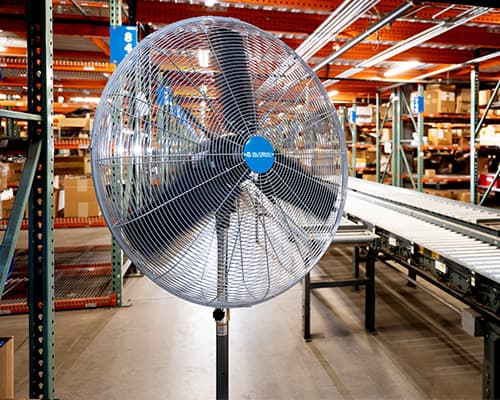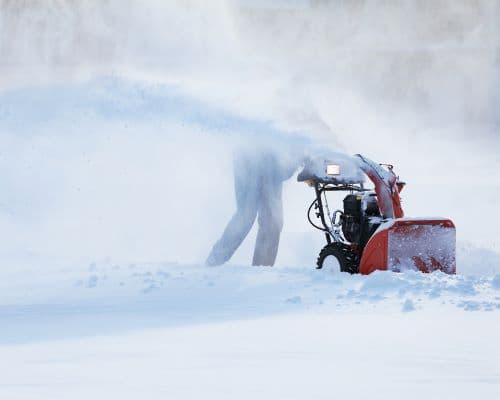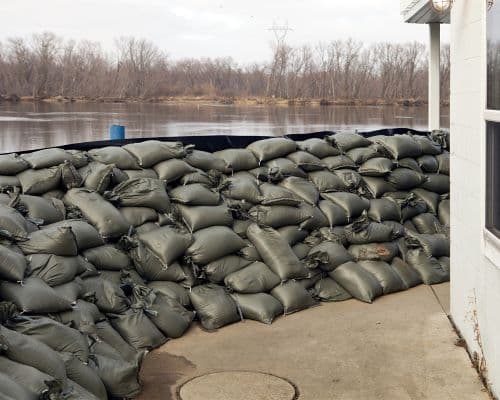There’s something in the air. The wind is picking up. The storm is coming. It’s time to prepare your business for the most unpredictable challenge of all: the weather.
In recent years, weather patterns have become increasingly volatile. Early springs, prolonged rainy seasons, heightened risks of flooding or prolonged drought - the uncertainty requires us to adapt our planning strategies to navigate the new normal. In the current climate landscape, it’s up to us to take practical steps to prepare for and mitigate the impact of changing weather patterns.
The environmental protection agency (EPA) highlights scientific studies that emphasize changes in temperature, precipitation, storms, floods, and droughts. The frequency and intensity of extreme weather events like heat waves and large storms are expected to continue to rise. But are we ready for these changes? In a survey of S&P Global 100 companies by the Center for Climate and Energy Solutions, only 28% reported they had done climate assessments. An even smaller number (18%) said they use climate-specific tools or models to assess their risks. By preparing for extreme weather, we can save ourselves time, money, and unnecessary risk.
Be Prepared:
While we can’t control the weather, there are steps we can take to effectively navigate the challenges posed by changing weather patterns. Whether you are dealing with extreme precipitation, excessive dryness, frigid or sweltering weather, a comprehensive plan should include two important steps:
Step 1: Scenario forecasting:
You know your area better than anyone. Take the time to do a comprehensive assessment of your climate risk. What range of reasonable scenarios could potential occur in your specific area to your facility? Solicit input from key team members to ensure a holistic understanding of potential challenges. Consider extreme scenarios - such as heavy snowfall or flooding - to prepare for unforeseen challenges. By looking into the potential future, you can develop strategies for handling even major disruptions like snow-covered parking lots or flooded facilities.
Step 2: Equipment and supplies impact assessment:
Know what you have and what you need. Identify equipment and supplies vulnerable to weather-related disruptions. Consider potential impacts on the supply chain, anticipating shortages, and increased prices during emergencies. When you plan for the availability and affordability of critical supplies, you can ensure a resilient supply chain and protect your business from excessive disruption.
Supplies and Equipment:
When it comes to adapting to seasonal shifts, a careful selection of supplies and equipment is key. Of course, this isn’t “one size fits all.” Different climates call for different preparation. A deeper look:

Warm Weather:
When the heat comes sooner or lasts longer than expected, climate control becomes a key issue. Portable air conditioners, fans, heaters, humidifiers, and dehumidifiers can be your best friends. Consider installing bottle filling stations to encourage hydration in warmer conditions. Prevent disruption from the heat and keep your staff and customers comfortable, safe, and happy.

Cold Weather:
Cold snaps and blizzards are no fun. Sometimes the chilling air and blanketing snow comes sooner or lasts longer than predicted. Be prepared! It is smart to preemptively stock winter readiness products such as ice melt, snow blowers, and survival kits as well as winter gear such as coats, winter gloves, and boots.

Rain and Floods:
Perhaps one of the most costly disasters, flooding is way more common than we’d like. Whenever flooding is a possibility, be prepared with sandbags, weather-resistant barriers, and lumber for boarding windows. It is also smart to invest in spill control products like spill kits, berms, and stormwater management solutions.

Emergency Preparedness:
In any climate, it is crucial to be ready for potential natural disasters. This includes stocking medical equipment such as portable first aid kits and dental supplies as well as whistles, flashlights, and two-way radios. Invest in storage solutions like shelving to accommodate additional supplies. Prioritize safety products, including gloves, traction spikes, and personal protective equipment (PPE). When emergency food prep could be an issue, it is smart to have catering supplies and kitchen supplies handy. Explore backup power options, including portable and standby generators and power stations.
As weather patterns continue to evolve, businesses must proactively adapt to ensure operational resilience. By building a comprehensive plan, considering various weather scenarios, and strategically investing in supplies and equipment, companies can mitigate risks and thrive in the face of changing environmental conditions. Global Industrial offers a variety of products to help your team stay safe and dry no matter what blows your way!
The information contained in this article is for informational, educational, and promotional purposes only and is based on information available as of the initial date of publication. It is the reader’s responsibility to ensure compliance with all applicable laws, rules, codes and regulations. If there is any question or doubt in regard to any element contained in this article, please consult a licensed professional. Under no circumstances will Global Industrial® be liable for any loss or damage caused by your reliance on this article.